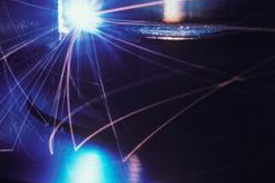Computer Numeric Control (CNC) machines control operating tools by converting instructions into actions. When alphanumerical codes are entered into a CNC machine, movement is triggered. Tools attached to the machine include laser cutters, routers and cutting tips. The CNC principle has been used in machines since the 1940s, upgrading with advances in computer technology. CNC machines function using either stepper or servo motors, each possessing its own advantages and disadvantages.
Stepper Motors: Advantages
The name “stepper” comes from the steps made by the motor with every signal pulse. It is simple to operate, inexpensive compared to servo motors and has a high reported accuracy. Its low speed torque enables the use of a pulley reduction and timing belt, allowing several loads to be driven without gearing.
Stepper Motors: Disadvantages
Stepper motors typically have a lower efficiency than servo motors. It is also resonance prone, and smooth movement often requires microstepping. Loads do not accelerate rapidly due to the low torque to inertia ratio. Despite the loud noise and overheating at high performance, stepper motors have an overall low power output for their weight and size.
Servo Motors: Advantages
Servo motors use closed-loop circuitry to transfer information to the CNC machine. A regular DC or AC motor is connected to an encoder fixed with a sensor. Servo motors have high accuracy and resolution owing to the sensor-fixed encoder. The motor is powered by the servo amp, which also counts the steps made. Its high torque to inertia ratio enables rapid load acceleration. With lighter loads, efficiency may reach up to 90 percent.
Servo Motors: Disadvantages
Servo motors are generally more costly than stepper motors and more complicated to operate. As peak operating power only develops at high speed, and the ventilation system easily becomes contaminated, servo motors are more susceptible to damage due to overheating and overloading. They also require servicing after the brush reaches its 2,000-hour life span.
Original Source





